When we finally cleared my father’s house I rediscovered my Granny’s postcard collection. Some were in a couple of rather dog-eared albums and others were loose. I remembered playing with them as a child, and my daughter had also looked at them and enjoyed rearranging them. Now that I know much more about the family (my father’s side), the postcards took on a whole new meaning for me. My daughter gave me a nice new album to keep them in and I began the long task of sorting them out.
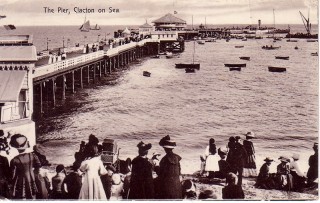
I could read the postmarks on most of the cards and was able to sort them chronologically and they began to make sense. It seems that my Granny, Mildred Coleman, as she then was, began collecting postcards in about 1903 and continued until 1915, when her first son was born. Some of the messages just say, “Here is a pretty card for your collection”. Others have not been used in the post and must have been bought by Mildred herself for the collection.
As a study of social history, the cards are fascinating. They are from a time of regular and frequent postal services.
In this era there were post collections in London every hour and up to six deliveries a day! Mildred and her family lived in Bedfordshire and London, and they obviously relied on the speed of delivery. Some of the messages contain greetings from holidays and for Christmas, New Year, birthdays etc. Others are clearly messages for which today we would use the phone; brief instructions, arrangements to meet, thank yous etc. If we used the postal service to send such messages today they would arrive many days later, not the same day as some of these clearly did.
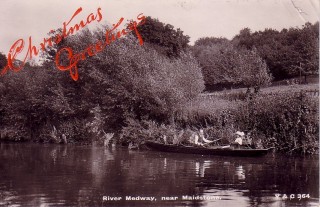
A study of the pictures on the cards is revealing. Some are excellent views of scenes such as a prettily coloured one showing Lyndhurst, Hampshire from 1910. Others are rather odd views but show a lot of fashion detail like this view of Clacton postmarked 1912. The one I find quite strange is of a River Medway scene, sent for Christmas 1913. It is so dark but is clearly a summer picture with Christmas Greetings embossed on it!
Then there are some written by local Bedfordshire customers of Mildred’s father’s grocery business. One message thanks him for the parcel but says, “I did not get the box of Day’s soap powder”. It is written on the back of a picture of St Patrick’s Church, Cork! Any old card would do, I presume.
Of course, it is the family history contained in the messages that forms the main interest for me. The large majority of the postcards were sent between Mildred and her sisters, brother, cousins, nephews and nieces.
I had already traced the people mentioned and they sprang to life in the brief messages on the back of the cards.
They give a flavour of Edwardian life rather than anything momentous. For example there is no mention of the death of Mildred’s father in 1910; correspondence about things such as this would have been sent in letters, which are sometimes referred to in the postcard messages. Sadly no letters survive – it was the pictures that saved the cards.
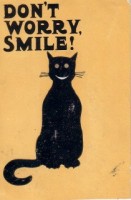
Mildred was one of the 25 nieces and nephews of her uncle, Edward Coleman, who was childless. I had already read his will, probated in 1913, in which he left each of them £500. I was very interested to find that they are clearly ‘looking after’ Uncle Edward, as several postcards are from Wokingham, Berkshire, sent while one or other of them was staying with him. In August 1907 Mildred’s sister Persis writes, “Shall be home tomorrow evening via Oxford. Last train leaves 5.40 arriving Millbrook 7.22pm. But if any mistake arises I shall cycle home [to Ampthill] from Leighton Buzzard or Bletchley”. It is about 15 miles from Leighton Buzzard to Ampthill, which would be a fairly long ride at the end of a day even with a modern bike! Persis would have been 34 in 1907. In October 1911 Persis writes from Wokingham, “Uncle’s strength better than when I came. Probably be home either Saturday or following Monday”.
Mildred was closest to her sister Ida. Luckily I already knew her nickname otherwise I would have been mystified at all the cards signed, “Love from Spide” (Ida > Spider > Spide!!).
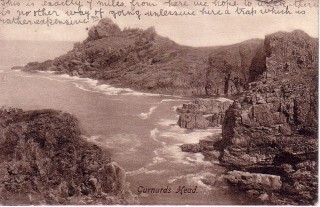
On one card Spide is clearly meeting with her husband to be. In July 1906 she writes from Eastbourne, “Simply delightful here. A.T.M. expected this evening but don’t let everybody know!”. I was surprised at the date on this one because Ida did not marry Alfred T Morris until 1911 when she was 30 years old!
In October 1907 Mildred married Frank Peck. There are cards addressed to them on their honeymoon in Paris and London describing how the family are preparing their house for them when they return. Spide writes to Mildred and Frank separately on two postcards posted at the same time.
To Mildred she says, “We are all looking forward to seeing you tomorrow. Have been carting things to your house all afternoon. Frank’s men are there and Hearn and Smith in the gardens”.
To Frank she says, “I hope you will not think we have done too much to the house! Your men are most anxious to have everything as straight as possible. They have put down cork lino and stair carpet as it looked so horribly bare without. Please don’t criticise arrangements too much”.
My grandfather was a very kind and gentlemanly person – I’m sure that he didn’t find too much fault! The men referred to would have been employees of the Ampthill department store Rushbrookes. Frank worked there all his life and eventually became the managing director, with the store changed its name to Frank Peck and Co.
Mildred and Frank had two sons; my uncle born in 1915 and my father born in 1919. I’ve often thought that it was quite a long time in those days before the birth of the first child. Mildred was 36 by the time my uncle was born. There is a whole series of postcards written from Mildred to Frank in February and March 1911. She has clearly gone to Penzance with Spide for a long holiday, leaving Frank staying with his in-laws in Ampthill. On some of the first cards she says, “I am feeling much better now but not quite well yet”. I have no idea what she had been ill with but wonder if it was perhaps a miscarriage.
As the holiday progresses Mildred becomes well again and seems to do a lot of walking. On the picture of Gurnards Head (posted 24th February 1911) it says, “This is exactly 7 miles from here, we hope to walk, there is no other way of going unless we hire a trap which is rather expensive”.
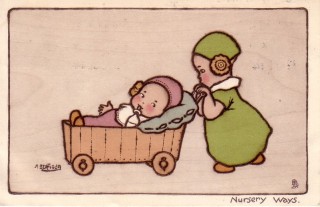
On the same card she describes, “I went for a long walk by myself this morning. I went up Lescudjack Hill where there is a most wonderful view…. I had a most interesting conversation with a farmer on the hill. He was telling me of the places I ought to visit and their history”.
And on another, “Went to church at Newlyn this morning and had a nice service. We are soon off for a good walk to make us nice and warm. The Salvation Army is making a dreadful racket outside here!”.
Spide also writes to Frank from Penzance (11th March 1911) with a cheeky cat card saying, “You were enquiring for another photo! This is the very latest!! How do you like it? I should be pleased to have one in return!!! We are looking forward to seeing you for the weekend”.
Finally I love the card called ‘Nursery Ways’. It was sent to Mildred from Spide’s husband in July 1914, by which time both Mildred and Spide had babies.
I hope that I have given you a flavour of this collection of over 150 cards. It has been difficult to know what to include and what to leave out. Much more could be said but it becomes so complicated when too many other family members pop up who are only known to me and may only have sent one card.
Anne in Carlisle
© Anne in Carlisle 2008